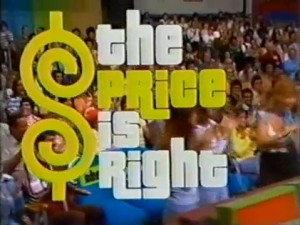 Pricing new products is one of the most strategic decisions startup CEOs face. This is true whether you are pioneering a new category, launching a SaaS or subscription model, or even entering an existing market space. Getting pricing right isn’t just a matter of gaining sales. It is critical to build a successful business.
Pricing new products is one of the most strategic decisions startup CEOs face. This is true whether you are pioneering a new category, launching a SaaS or subscription model, or even entering an existing market space. Getting pricing right isn’t just a matter of gaining sales. It is critical to build a successful business.
A recent post on VentureBeat, How to price your startup’s product right — the first time (read it here), outlines why startups should avoid the temptation of pricing their offering too low to gain market share. It makes future growth unsustainable, devalues your product offering, and its hard to raise your prices later.
The article outlines three factors to consider when pricing your product:
- Materials costs: the amount of money you spend on the raw materials needed to create your products.
- Labor costs: the number of hours required to make your product and the hourly rate associated with those hours.
- Overhead costs: any further expenses required for the operation of your business.
Understanding your cost of goods sold (1 & 2) and overhead costs (3) is a good first step. Calculating your gross margin at your proposed price point enables you to benchmark against similar businesses, industry comparisons, and business model comparisons. This is important not only in building a profitable business, but in determining how your business will be valued. You have to make enough margin to cover your other expenses (3) and leave room for profit at scale.
However, the article fails to highlight one of the most important factors – especially for SaaS and subscription models. Failing to understand customer acquisition cost (CAC) and lifetime value (LTV) are the biggest errors I see startups make in setting pricing. While sales and marketing costs might be considered in overhead costs (3), they are the biggest drivers of determining the right price point along with the cost of delivering the product and should be considered as an additional component. They determine the viability of the business and are key drivers of cash flow and how much funding the business will need.
In order to understand your expected CAC you have to build your plan bottoms up. This means not only forecasting how many customers you’ll get, and when you’ll get them – but also how you will get them. What methods for generating leads will you use and how much will that cost? What is your sales model? Are you using reasonable conversion rates? Once you outline this, you can divide those costs by the number of new customers to get your CAC. Just like your cost of goods, this is an expense you must cover in your pricing. The lifetime value of the customer is the average sales to that customer over the lifetime of the customer. For example, if you have a monthly subscription model and an average customer will use your service for 2 years, the LTV is 24 times the monthly price.
Building these costs into your pricing and researching whether your assumptions are reasonable is a key component of getting your pricing right. As you build your business, you will be able to monitor your actual results against your assumptions and know whether you are on track or you need to make adjustments.
Getting pricing right will enable you to build a successful business. Don’t just base it on competitive offerings or ‘gut’ feel of what customers will pay. Follow these steps to determine what you need to charge. If your model requires a price the market won’t pay or fails to deliver an ROI to your customers– you don’t have a viable business and you need to rethink your business model.